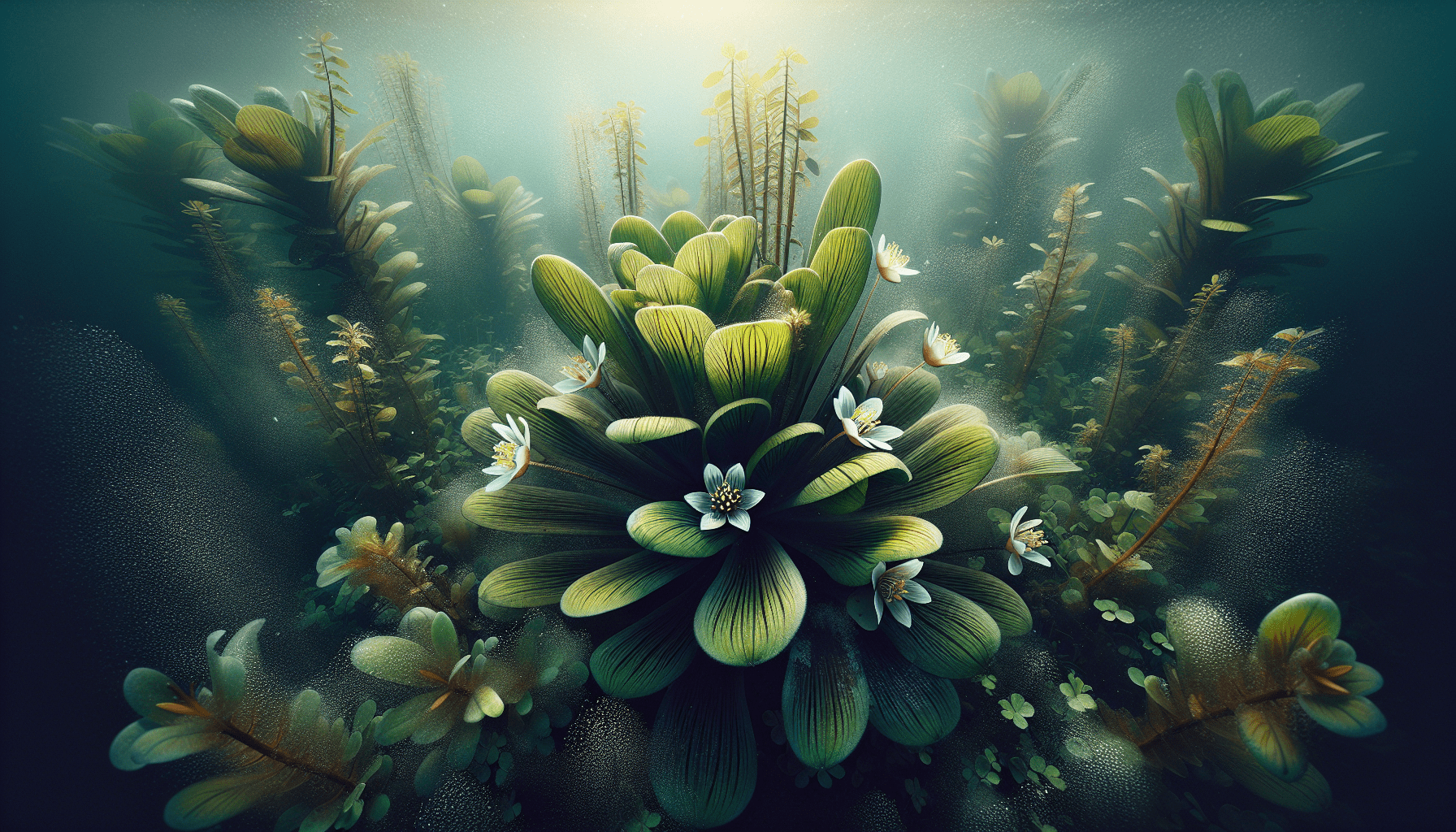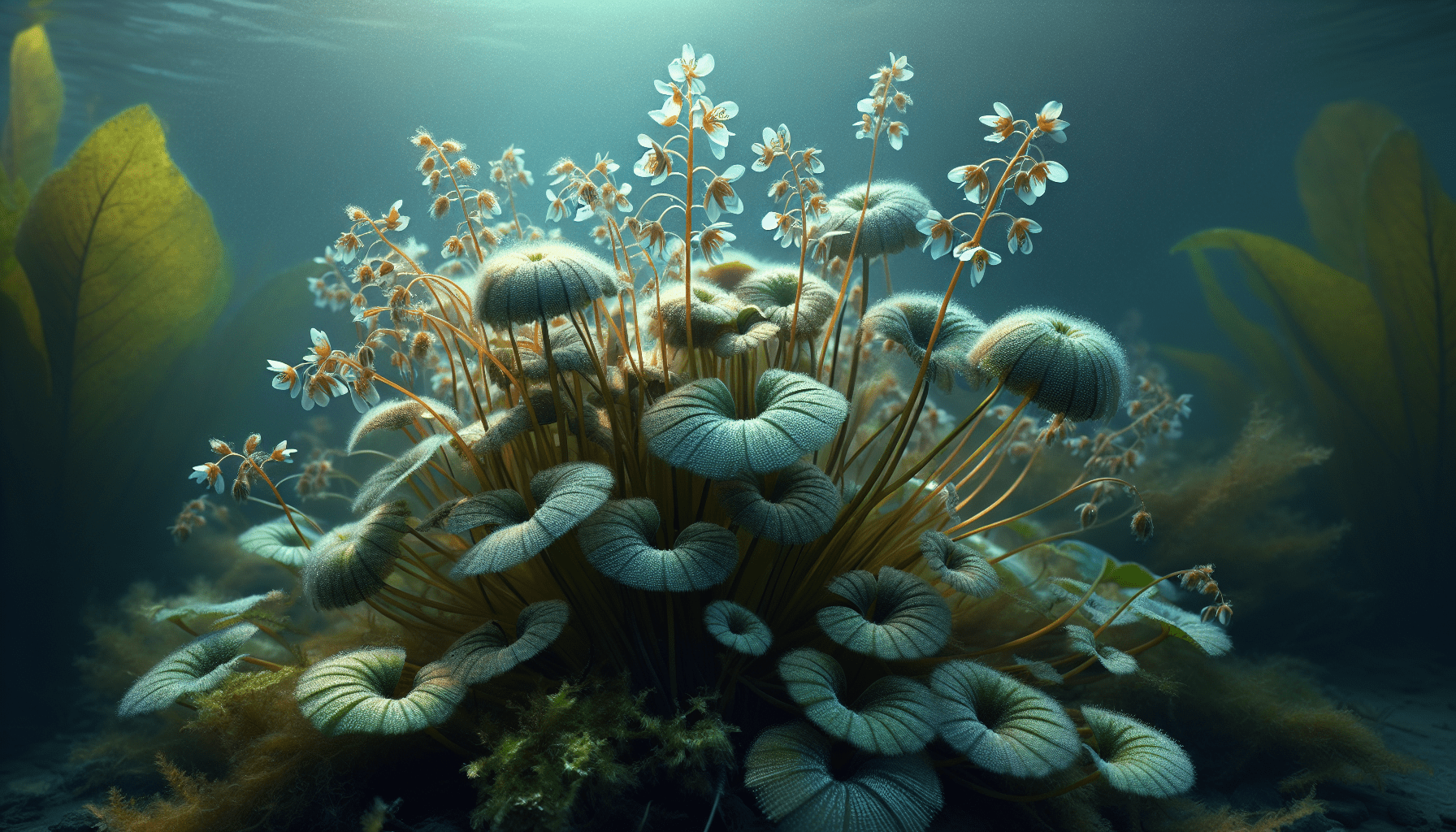As you navigate the realms of aquatic flora, the term Potamogeton Nodosus may catch your attention. This piece aims to heighten your understanding of this particular aquatic weed, often found adorning bodies of water across numerous locales. The article endeavors to elucidate on the nature and properties of Potamogeton Nodosus, fast-tracking your knowledge about its growth patterns, the environmental conditions favorable to its proliferation, the ecological role it fulfills, and much more. An awareness of its significant presence in our aquatic ecosystems provides a window into fascinating aspects of aquatic ecology that often stay overlooked.

Botanical Description of Potamogeton Nodosus
Potamogeton nodosus is an aquatic plant native to several regions across the globe. This section will elaborate on the botanical features that facilitate the identification of this plant species.
Identification features of Potamogeton Nodosus
The features that distinguish Potamogeton nodosus from other plants include its unique stipules, leaf structure, and notably, its stem. The stipules, which are leaf-like appendages located at the base of the leaf stalks, are fused to the leaf for over half their length. This characteristic is exclusive to Potamogeton nodosus among all other members of the Potamogeton genus.
Physical characteristics, including color, size, and shape
Potamogeton nodosus typically takes on a bright green hue, although this may vary depending on environmental factors such as nutrient availability and light intensity. The plant reaches an average height of 1-2 meters. The leaves, arranged oppositely along the stem, are generally lance-shaped, with the submerged leaves being wider and thinner compared to the emergent ones.
Structural features of leaves, stems, and flowers
The leaves of Potamogeton nodosus have a distinctive leathery texture and prominent midribs. The basal leaves, which remain underwater, are long, ribbon-like, and cluster in groups of 4-5 leaves. The stems are flexible, cylindrical, and often branched, making them easily discernible. The flowers are tiny, emitting a green color and featuring four stamens.
Common Names and Synonyms
Common names used in different regions
This aquatic weed is known by several names, which vary across regions. Some of the common names include longleaf pondweed, floating leaf pondweed, and clasping leaf pondweed.
Synonyms used in botanical literature
In botanical literature, Potamogeton nodosus has been referred to under various synonyms. Some of them include Potamogeton americanus, Potamogeton fluitans, and Potamogeton mexicanus.
Habitat and Distribution
Typical habitats of Potamogeton Nodosus
Potamogeton nodosus is an opportunist species that can survive in a wide range of freshwater bodies. This includes ponds, lakes, and slow-moving rivers. It grows optimally in waters that are moderately acidic to alkaline, preferably with abundant sunlight.
Geographical distribution around the world
Potamogeton nodosus boasts a cosmopolitan distribution, being found in all continents except Antarctica. It is particularly common in North America, Eurasia, and parts of Africa.
Climatic and environmental conditions preferred
Potamogeton nodosus prefers temperate climates and can tolerate a broad range of environmental conditions. It thrives in slightly disturbed areas with high levels of nutrients and grows well in silty to loamy soils.

Growth and Reproduction
Life cycle of Potamogeton Nodosus
The life cycle of Potamogeton nodosus initiates in spring when the water temperature rises. The plant continues to grow until fall, when the emergent leaves die off and the plant retreats to its underwater form for the winter.
Process of growth and development
Primarily, the growth of Potamogeton nodosus involves the extension of long stems through the water, with leaves emerging alternately along the stem. It develops a thick mat of fibrous roots in the substrate, from which new stems grow.
Reproduction strategy, including seed production and dispersal
The reproduction of Potamogeton nodosus mostly occurs vegetatively through rhizomes, or via fragmentation where parts of the plant break off and form a new plant. They can also produce seeds, which are dispersed by water currents to commence a new plant’s growth.
Ecological Role
Role in aquatic ecosystems
Potamogeton nodosus plays a crucial role in aquatic ecosystems. It signifies a major oxygen production source, enhancing the water quality by reducing nutrient levels. Moreover, it provides an excellent habitat for various aquatic organisms, ranging from microscopic invertebrates to large fish.
Interaction with animal and plant species
Potamogeton nodosus interacts extensively with other species in the ecosystem. The young leaves serve as a nutritious food source for various waterfowl species. Furthermore, it forms part of intricate plant networks underwater, creating vital cover for fish and invertebrates.
Impact on water quality and sediment
Potamogeton nodosus impacts both the water quality and sediment in a variety of ways. It acts as a biofilter, absorbing excess nutrients and toxins from the water. The plant’s extensive root system also stabilizes the sediment, preventing soil erosion.
Economic Importance and Uses
Uses in traditional medicine
Traditionally, different parts of Potamogeton nodosus have been used for medicinal purposes. For instance, the plant is reputed to have antimicrobial, hepato-protective, and anti-diabetic attributes.
Importance in aquaculture and fisheries
In aquaculture, Potamogeton nodosus is critical for maintaining water quality and providing cover for cultured fish. The plant also serves as a food source for certain species.
Relevance for water management and landscaping
In water management, Potamogeton nodosus is often used as a visual indicator of clean water. Moreover, it contributes to the aesthetic appeal of water bodies in landscape design due to its emergent, floating leaves.
Potential Threats and Problems
Threats from pollution and habitat loss
Like most aquatic plants, Potamogeton nodosus is vulnerable to habitat loss and pollution. Water pollution, caused by agricultural runoff and untreated sewage, poses a severe threat to its survival.
Negative impacts when it becomes invasive
When the plant becomes overly abundant, it may become invasive, causing significant ecological imbalance. High densities of Potamogeton nodosus can obstruct water flow, stifle other plant species, and reduce biological diversity.
Control and management challenges
Controlling and managing Potamogeton nodosus can be challenging, mainly due to its fast growth and aggressive reproduction. Moreover, its adaptability to a wide range of conditions makes it resistant to many conventional control methods.
Management and Control Measures
Physical control methods
Physical control methods for Potamogeton nodosus include manual removal through raking or cutting, and the use of underwater screens to prevent sunlight penetration, thereby limiting its growth.
Chemical control options
Chemical control options include the use of selective herbicides that target Potamogeton nodosus without affecting non-target species. However, their use should be carefully monitored to prevent adverse ecological effects.
Biological control agents and strategies
Potential biological control agents for Potamogeton nodosus include certain species of waterfowl and insects that feed on the plant. Strategies for biological control should be carefully devised to ensure that they do not inadvertently cause other ecological problems.
Research and Studies on Potamogeton Nodosus
Recent research findings on Potamogeton Nodosus
Recent research on Potamogeton nodosus focuses primarily on its usage as a bioindicator for water quality and its role in mitigating eutrophication in freshwater ecosystems.
Ongoing studies and areas of interest
Ongoing studies are being conducted into the ecological functions of Potamogeton nodosus, particularly in terms of its interactions with other species and its role in nutrient cycling.
Contribution to scientific knowledge and understanding
Potamogeton nodosus plays a critical role in enhancing our understanding of aquatic ecosystem dynamics. Its comprehensive study can aid in designing more effective water management and conservation strategies.
Case Studies and Real-Life Examples
Instances of Potamogeton Nodosus infestation
Several instances of Potamogeton nodosus infestations have been noted, particularly in temperate regions globally. Such infestations often result in substantial changes in the local ecosystem’s balance, emphasizing the need for effective control measures.
Success stories of controlling Potamogeton Nodosus
Success stories in controlling Potamogeton nodosus usually involve a combination of physical, chemical, and biological control methods tailored to the specific environment’s conditions and needs.
Examples of application in different sectors
Potamogeton nodosus finds utility in several sectors, from traditional medicine to aquaculture, water management, and landscaping. Its versatile uses and ecological significance underscore its relevance in various facets of human life and activity.
